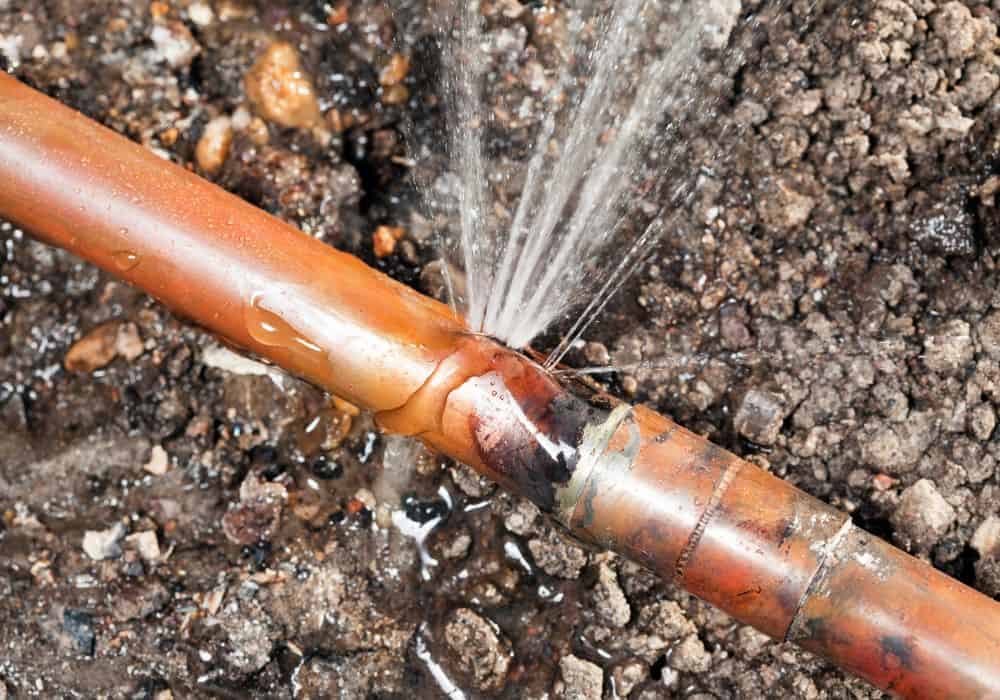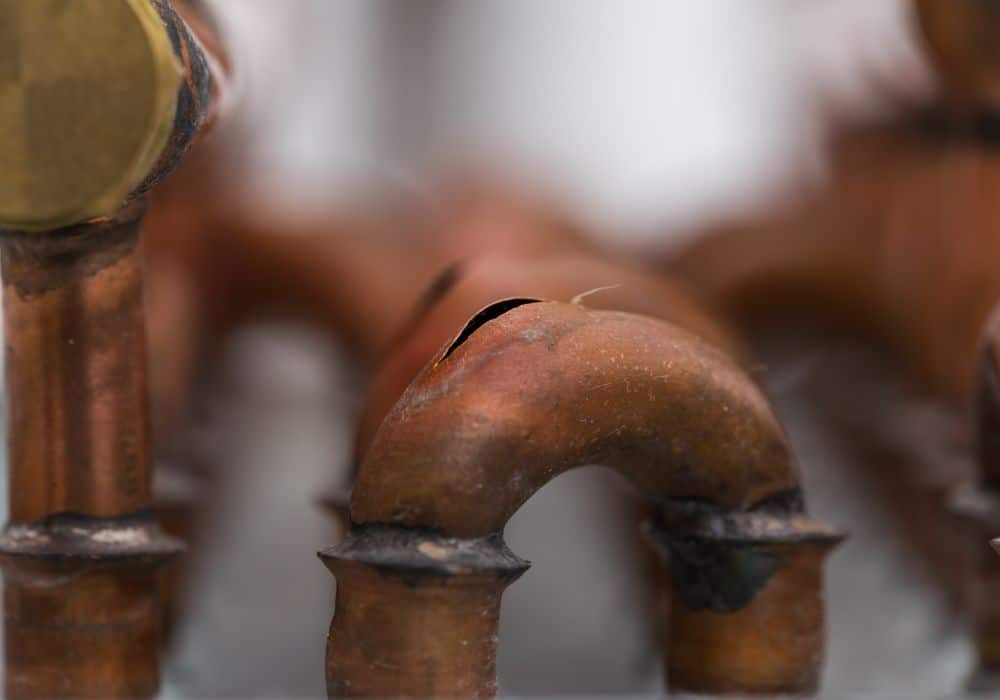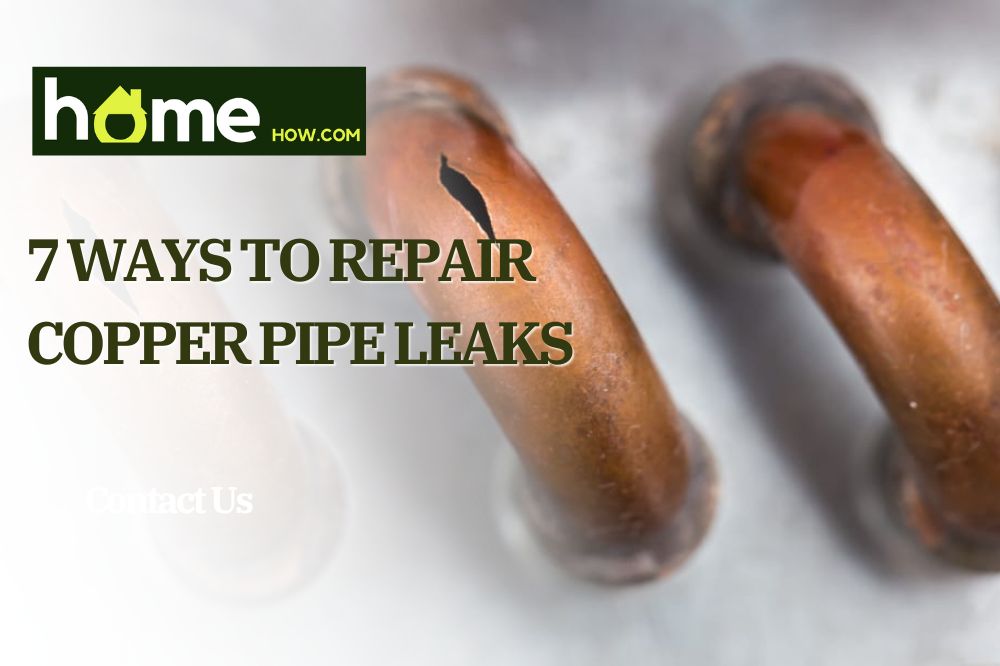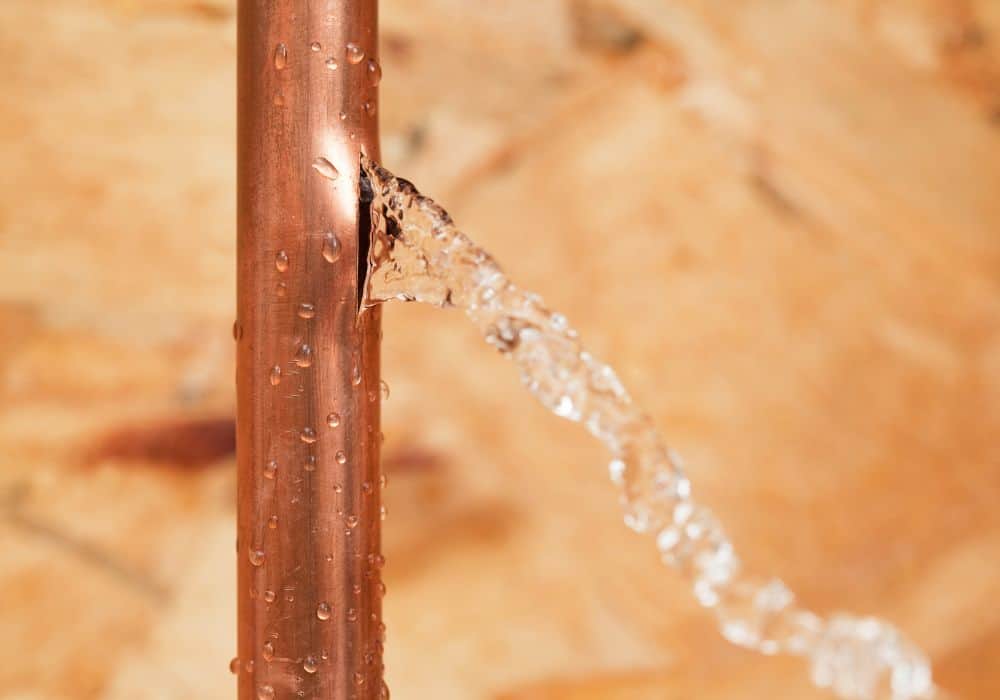Copper pipes are some of the market’s most effective, practical, and reliable ones. They carry everything from drinking water to hot water, gas, venting, and sewage.
You can find them virtually everywhere in our home, from sinks and toilets to underneath flooring, between walls, and more.
Despite their reliability, at some point, they might suffer a leak or crack. But the good news is that you can repair your pipe – even if you don have much plumbing experience!
Today, we’ll talk you through how you can fix your copper water pipe. We’ll also offer recommendations on which technique is most effective in specific circumstances and share our pro tips to ensure you’re replacement pipe stands the test of time.
The different ways you can repair a leaky copper pipe
1. Solder repair couplings
The most common and arguably most effective method for fixing your copper pipe is through a combination of soldering and repair couplings. It can repair burst pipes, as well as pinhole leaks, in an instant.
- Cut out the damaged part of your copper pipe and discard. Be careful of sharp edges.
- Soften both ends with a deburring or utility knife to enlarge the holes. This improves flow.
- Slide a repair coupling on both sides of the existing but exposed pipe system. This will allow the new piece of pipe to fit in snugly.
- Ensure the new and old pipes meet underneath the coupling.
- Solder the coupling and piping together.
- Clean, wipe down and then turn the water back on to test if the repair takes hold.
2. Sharkbite slip coupling
This method avoids soldering, allowing even beginners to grab a few accessories and fix their leaky copper pipe in a few minutes, as well as other pipe types like PEX, CPVC, and PVC.
- Measure your sharkbite slip, as these accessories only come in specific sizes.
- Mark the measurement on the copper pipe that needs replacing and cut accordingly.
- Cut out the defective pipe with a pipe cutter, and deburr the inside and outer edges.
- Push the slip end of the fitting until it clears the other end of the pipe.
- Use a wrench to align it so that both pipes connect firmly.
3. Compression couplings
This method is perhaps the easiest, quickest way of repairing a leaking copper pipe. It is suitable for all skill levels. You must be mindful of cutting pipes and avoiding sharp or abrasive edges.
- Cut out the damaged part of the pipe, and slip on the couplings.
- Apply a pipe sealant, like pipe dope, which helps you tighten everything together quickly.
- Slot the new piece of piping in, and with a wrench, tighten the coupling down.
- Turn on the water – if there’s a small leak still present, tighten the coupling more.
4. Pipe repair clamp
Sometimes, we can’t turn off the water in time. And a leaky pipe is bursting, causing massive damage. If you want an immediate fix, you should have repair clamps in your plumbing toolbox.
The only thing you must ensure is that the clamp’s size and strength match your copper pipe. Be careful not to screw the clamp on too tightly, as this can cause unnecessary bending that can make the leak worse when the clamp is removed.
Ensure the clamp is made of non-toxic materials, especially if the copper pipe carries drinking water, as chemicals may leach into the contents as they pass by the clamp. Finally, a repair clamp is only a temporary means of fixing your pipe. At some point, you will need to source a permanent repair.
5. Soldering the leak closed
Like the clamp method, soldering the leak closed is only a temporary measure, and you should see it as giving you more time to research a more permanent, secure repair. Because it involves soldering, you do need some basic plumbing skills.
- Although only suitable for pinhole leaks, you might be able to solder the pipe to fix it.
- Turn off the water and ensure the interior of the pipe is dry.
- Using an abrasive pad, clean and smooth the pipe’s pinhole.
- Apply pipe flux (acidic paste), and apply heat gradually. The flux will slowly change color.
- If the pinhole leak has expanded and is too big for a quick soldering job, you can apply electrical wire around the leak.
- Use pliers to secure the wire in place and solder it. The wire will help hold the more significant leak until a more formal repair can be done.
6. Polypropylene adhesive tape
Looks can be deceiving, especially regarding adhesives and leaky pipes. But polypropylene adhesive tape can be a quick solution to mending a damaged pipe. It simply requires a little space, some patience, and elbow grease.
- Polymer tapes can be a quick fix to a leaky copper pipe because they withstand over 100 PSI of water pressure.
- It’s handy for limiting the damage of a leak, as it can be applied when the piping is wet. That said, you need to be able to wrap it tightly around – so space is an issue.
- Choose a non-toxic tape for drinking water. Again, this is only a temporary solution until a permanent fix can be established.
7. Epoxy resin & Cloth
Another temporary fix that requires little to no plumbing skills is epoxy resin compounds. Brands may differ in their ingredients and concentration, but ultimately they are all unsuitable for drinking water.
Additionally, some come with a specialized cloth that helps bind the epoxy together. Steps include:
- Mix the parts of the resin, and apply them to the leak.
- Taper both ends and allow to dry.
- Soak the loth, and wrap it tightly around the resin, ensuring there’s tension.
We must bring to your attention that epoxy resin can be quite challenging to remove from the pipes. They may also look unsightly and are best used temporarily on pipes that are not in plain view.
Diagnosing what caused the leak in the first place

Fixing your pipe is of the utmost importance to limit the leak and the damage it can cause.
That said, you should also spend time examining the damage and diagnosing its source to see if there are potentially other pipes nearby that might soon rupture. To help, here are the most common culprits, how to detect them, and what this might mean for the rest of your copper pipes.
1. Corrosion
Signs of corrosion include color changes (blue and green), rust, and foul odors. They must be replaced. Improving water quality and cleaning microbes can prevent corrosion from taking hold.
2. Clogging
- Pipes can become clogged, expand, and then burst. This usually results from debris building up and viscous substances like grease and oil.
- Prevent this by regularly cleaning pipes and limiting debris entering your sink or vent.
3. Incorrect installation
Sometimes, your copper pipe may be structurally sound, but still, a leak develops. This is often down to improper installation, including broken seals, bad joints, or unsuitable connectors.
If the pipe is in relatively good condition under inspection, examine connections to see if this is the source of the leaking. You may just have to tighten a few screws together with any luck.
4. Tree roots
Tree roots may quickly penetrate piping and cause significant damage if your copper pipes are laid outside. Often, this type of damage requires a professional, as pipes can be pretty deep underground.
Expert tips:

- When repairing a pipe, it’s a good idea to examine the leak carefully for signs of corrosion – this may weaken other pipes in your system and help you preemptively replace a failing system.
- As there are several different techniques, you should examine your copper pipe closely and pick the most appropriate method for your skill set.
- Temporary holds are just that – temporary. You must adhere to strict regulations and apply a secure fix whenever possible.
- When using tapes, ensure enough space to wrap the material around the pipe. Avoid this technique if the pipe is tightly secured to the wall or ceiling.
- When using any form of adhesive, resin, or tape, ensure it is non-toxic because otherwise, harsh chemicals may leach into whatever the pipe is carrying.
- Expoxy is an unsuitable material to use around water.
Conclusion
Copper pipes are some of the best investments a homeowner can make. They are reliable, resilient, strong, and do their job well – once correctly installed.
But they are sadly not invincible and, at some point, might suffer some damage and spring a leak. The most important thing to remember is not to panic.
As we’ve explained, there are a variety of permanent and temporary fixes you can put on your leaky pipe to get you through it. Remember, if you use adhesive tape, epoxy, or another temporary quick fix, you should still consult a plumber, as these will not hold indefinitely.
With any luck, your copper pipes can be easily patched and fixed and continue to serve you for a very long time. And as you build upon your skills, you will become more confident in resolving all your plumbing problems.

